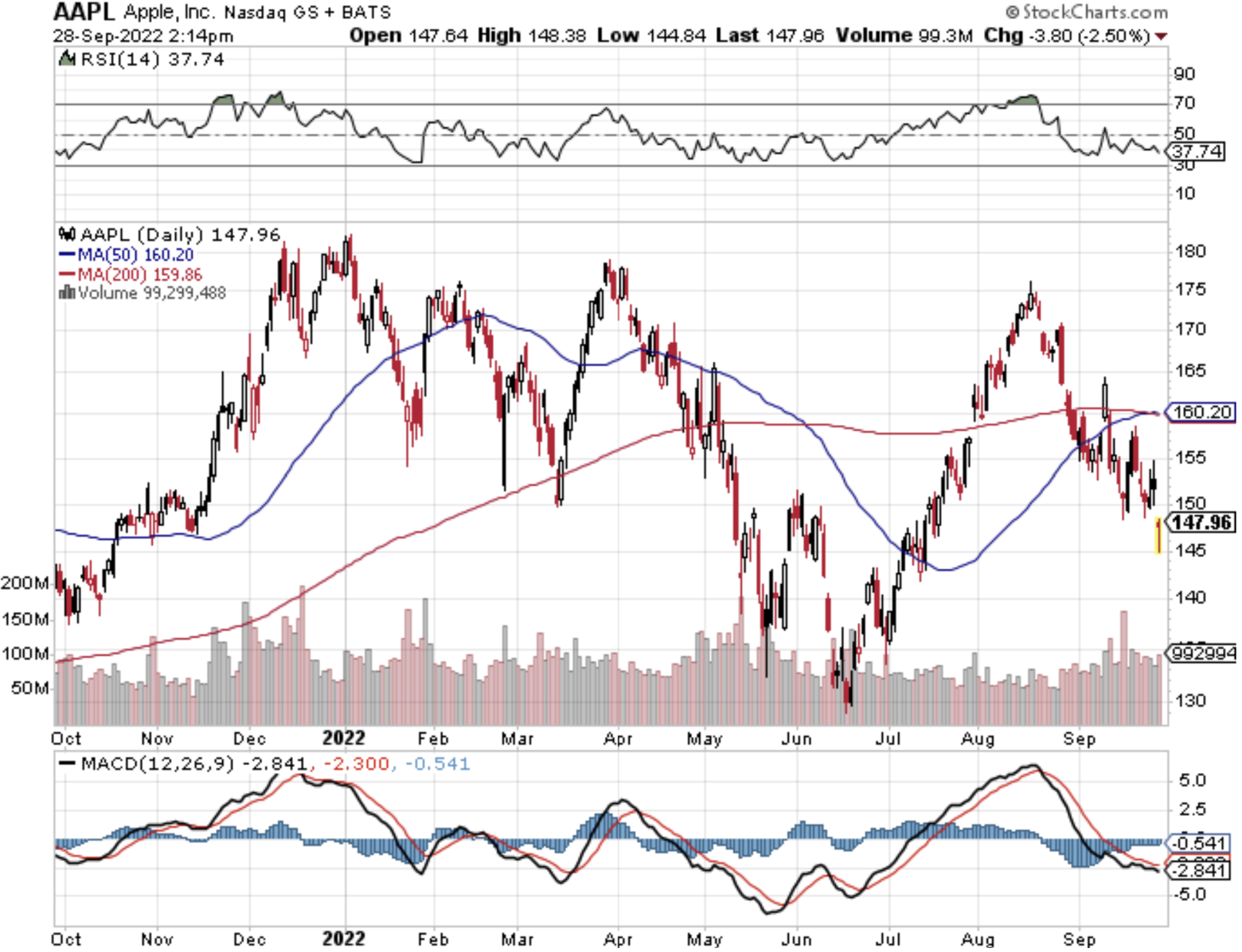I hit the nail on the head – I’ll take another victory lap and you’re welcome.
I’ve been telling all my subscribers.
Apple backing off production of the new iPhone 14s signals that the US consumer is tapped out.
Throw in the towel!
What does that mean?
At the low-end, US consumers don’t have the extra funds to pay for all the streaming services or the extra hardware, gizmos, and gadgets they are used to.
That means the iPhone 14 Pro is next to get squeezed from the budget after an eye-watering $1,500 pretax price tag. At least at that price point, it includes 1 TB of data storage, but no charger.
Personally, I acknowledge that Apple makes a pretty darn good smartphone, but it’s way too overpriced in 2022 and there aren’t enough improvements to justify the lofty prices.
But the killing of new iPhone production goes well beyond just the issue of global sales of smartphones, this is a harbinger of things to come as global economic growth goes from bad to worse.
This is also legit confirmation that inflation is not only transitory, but it’s terrorizing US consumers’ budgets.
Interestingly enough, the most expensive models did still see high demand, confirming what I already have been saying is that high income US consumers are navigating elevated inflation more than superb even if conditions aren’t ideal.
Because they are in good shape – great personal financial balance sheets – hope it stays that way.
Thus, Apple supplier is shifting production capacity from lower-priced iPhones to premium models.
High income households are passing on their costs to the end consumers in the companies they run, and they are jacking up rents in the condos they let out.
They are even hitting up Walmart more than usual and abstaining from pricier options like Whole Foods or Whole paycheck.
Fantastically, high income Americans are ready to spend, spend, spend and that’s great news for employers and employees, but bad news for the bond market.
Apple is cutting the iPhone 14 product family by as many as 6 million units in the second half of this year.
Instead, the company will aim to produce 90 million handsets for the period, roughly the same level as the prior year and in line with Apple’s original forecast this summer.
In Taipei, key chipmaker Taiwan Semiconductor Manufacturing Co. (TSM) fell 2.2% and Apple’s biggest iPhone assembler Hon Hai Precision Industry Co. (HNHPF) was down 2.9%, amid a wide selloff of electronics suppliers.
ASML Holding NV (ASML), maker of advanced chipmaking gear, dropped as much as 3.2% in Amsterdam.
Purchases of the iPhone 14 series over its first three days of availability in China were 11% down on its predecessor the previous year.
Readers must be aware of Apple being the biggest component of the S&P. When Apple goes, so does the market.
Then there is the issue of, maybe the phones just suck now, since each iteration is the trigger for higher expectations which aren’t really met anymore.
Either way, CEO Tim Cook needs to roll up his sleeves, and this report ostensibly means that Apple won’t return to 2022 highs anytime soon.
It also vindicates and confirms that we are still in a sell the rallies mode or buy the dip after deep selloffs mode. This is a short-term traders' world right now and the data backs me up.
Happy trading!





